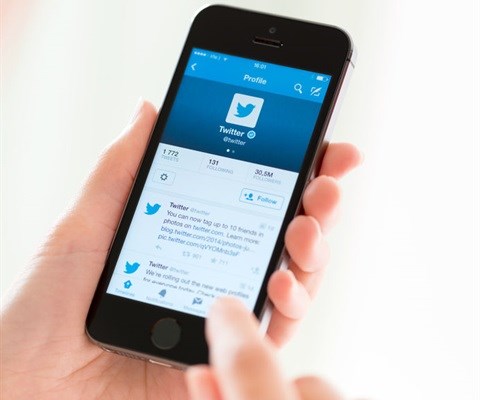
Subscribe & Follow
#AfricaMonth
Jobs
- Digital Marketing Paid Media Manager Cape Town
- Performance Marketing Manager Johannesburg, Cape Town
- Social Media Manager George
- Designer (Digital, Print, Video and Animation) Cape Town
- Digital Graphic Designer Johannesburg
- Graphic Designer Cape Town
- Social Media Manager Johannesburg
- Social Media Manager Cape Town
In the news
Hitting the tweet spot with Twitter
Twitter, like any marketing medium out there, unfortunately cannot be approached with a "one size fits all" approach. Some scribes argue that you cannot tweet too much, and others caution you to avoid the irritation factor.
Social media is a complicated beast and is the only medium that evolves and changes on a daily basis. Besides new platforms that sprout up like wild mushrooms, those that are established change their offerings regularly. This makes the challenge of writing a white paper on best practice impossible.

When it comes to Twitter and tweeting frequency, it is probably best to distinguish between personal tweeting and business tweeting. The tolerance level for these different purposes and audiences vary.
From a personal perspective I enjoy regular tweets from the people and topics that interest me. When it comes to sport, sports personalities and general interests of mine I tolerate and enjoy regular news, updates and information.
However, from a professional perspective I tend to get irritated with companies and brands that bombard me with too much sales information. Brands that I loved enough to follow in the first place risk being unfollowed by me quicker. For all practical purposes it is easier for me to search for what I need via #hashtags, when I need it or when I have time to do more research. But as I said before, it is not a perfect science. My experience is a personal one and might differ from others.
There is however enough information out there to establish some guidelines that seems to be best practice. Due to the audience that would read this article, I am going to pause by the usage of Twitter from a business perspective.
- • It is probably not necessary for a business to tweet more than 10 - 12 times per day. Some brands tend to overwhelm Twitter followers and post around 20 tweets a day, while others post only occasionally. To keep your audience engaged, you should avoid both extremes and stay somewhere in the middle.
• Although frequency will play a role in the success of your Twitter strategy, it is probably of lesser importance than content. Content is king. You have to be relevant. People don't follow you because you made 4 or 30 tweets today. This might seem like a contradiction to what I said in the previous point, but you have to understand the context. People follow you because the information that you share ads value to their life. It boils down to the simple rule of thumb, if you don't have enough quality content that interest your followers, then you are probably not ready to increase your tweeting frequency.
• Do not over tweet to just add value to your sales efforts. Counter balance your twitter activity with content that is unrelated to sales. For a Hardware Business this could mean that you tweet some specials, but also tweet tips on how to hang a door, for example.
• You can very easily track whether you are relevant. If your tweets get ignored and have very little engagement, then your strategy is wrong. You do not want to be known as a SPAMMER!! You will most likely fall in this category if you make yourself guilty of excessive tweeting, using direct messages to sell products or offer services or if you trick your followers into clicking on a link that leads to some type of sales page.
• Don't forget to tweet on weekends. Weekends produces a 30% higher engagement for fashion brands - to name one. Yet only 19% of such brands tweeted on Saturdays. Only 7% of tweets from publishers appears on Saturdays - yet there is a 29% higher engagement with publisher tweets on this day. It is obvious - this is when consumers catch up on the news of the past week. Schedule your posts when your audience is online. Maybe posting on off hours isn't all that bad after all?
• The best scientific approach to your twitter success is your own analytics. Trial and error is the best method of evaluating your Twitter strategy. Some companies have found that at three tweets per day their engagement spikes and that by five it starts taking a dip. Keeping a mathematical eye on your tweet frequency is a good idea, and will probably help you maintain a healthy and consistent level of exposure.
• Using videos, hashtags, promoted tweets and other types of media will keep your audience engaged. When you keep your content fresh, unique and are of actual benefit to your followers, not only will they keep on following you but you will also gain new ones. Sharing humour with your target audience (via links) not only humanizes your company, it gives your followers a reason to seek you out.
• Remember, your followers will not be reading everything that you tweet, in fact, they won't read most of what you tweet.
• Most people do not spend hours pouring over their Twitter stream. Therefore Twitter moves faster than any other network. In the past a tweet had a lifespan of hours, but today it is measured as only 18 minutes. That means twenty minutes after you send a tweet, more than half of the people who are going to see it have already seen it. Presumably, the longer a tweet sits at the top of your page, the longer its life. The more you tweet, the shorter the lifespan of each individual tweet.
• Avoid tweeting recklessly. Post regular and useful updates that are well-written and researched. Maximise the 140-character limit on Twitter by providing tweets that are associated with your objectives and industry. People will look forward to your posts more if you give them real and interesting news.
• How to measure your Total Engagement Rate: Total Engagement Rate= [(total number of replies + retweets + favourites)/ the number of followers on the given day] x 100.
• How to measure your Average Engagement Rate: Average Engagement Rate= [(total number of replies + retweets + favourites/ number of tweets posted that day)/ number of followers on the given day] x 100.
• Useful Tools: TweetStats, Simply Measured Account Report, BufferOnce you apply some of these guidelines you should experience greater success with your Twitter strategy. The biggest lesson learnt here is that it is not the frequency that guarantees success, but rather the quality of your content. A successful strategy is well thought out, carefully implemented, tweakable and well measured.















